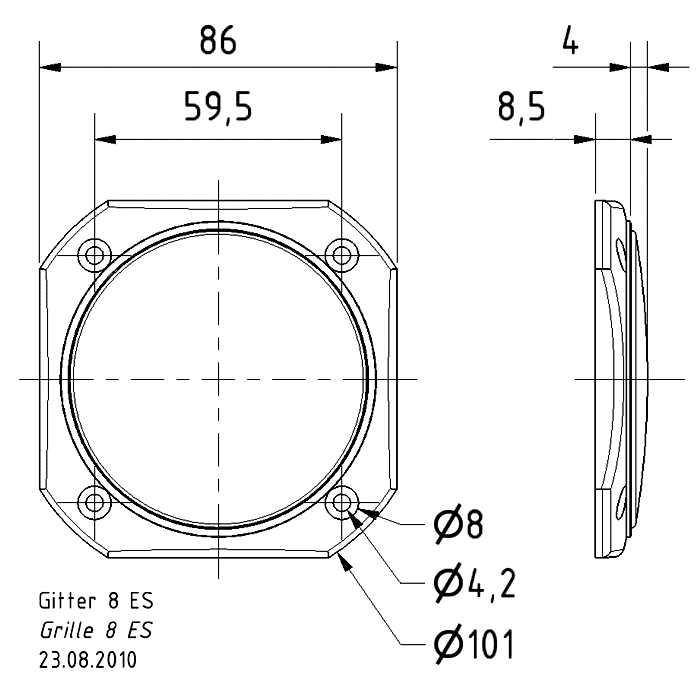

Gitter kaarst for free#
Gitter kaarst how to#
Gitter kaarst full#
In practice, Eric (lead Gitter dev) laid out the waypoints of the full journey: This "application service" comes pre-packaged for you in many cases, so for example you can simply drop in a library like matrix-appservice-bridge in a Node.js application, and all of the Matrix talking complexity is handled for you.Add an application service to Gitter to bridge traffic in & out of Matrix:.Then display the virtualUser whenever available over the author. This can be accomplished by simply adding a virtualUser property to your chat message/post/tweet schema which holds the mxid, displayName, and avatar as an alternative to your author field.Add ‘virtual users’, so remote Matrix users can be modelled and represented in Gitter correctly.In terms of the work which has gone into this - Gitter has been an excellent case study of how you can easily plug an existing large established chat system into Matrix.Īt high level, the core work needed was as simple as: Gitter doesn’t have these natively today, and rather than adding them to Gitter, we’d rather work on merging Gitter & Element together.įor more details, we strongly recommend checking out the native Matrix epic on Gitlab for the unvarnished truth straight from the coal-face! How do you make an existing chat system talk Matrix? This will get addressed when Gitter merges with Element into a pure Matrix client. This could consume huge resources on Gitter, and we’re not in a rush to mirror all of Matrix into Gitter. Ability to join arbitrary rooms on Matrix from Gitter.

Bridging emotes (/me support) (almost landed!).Currently the membership syncs incrementally as people speak Synchronising the full Gitter membership list to Matrix.Ability to view past Gitter history from Matrix.Ability to plumb existing Matrix rooms into Gitter natively.

Ability to send/receive Direct Messages.Bridging Edits, Replies (mapped to Threads on Gitter), Deletes, File transfer.Ability to join rooms from Matrix via #org_repo:gitter.im.As a result: all the important features work, but there’s also stuff that’s yet to land: Now, this is the first cut of native Matrix support in Gitter: much of the time since Gitter joined Element has been spent migrating stuff over from Gitlab to Element, and it’s only really been a month of work so far in hooking up Matrix. This is also great news for mobile Gitter users - as the original mobile Gitter clients have been in a holding pattern for over a year, and native Matrix support for Gitter means they are now officially deprecated in favour of Element (or indeed any other mobile Matrix client). We’re hopeful that glueing everything together via Matrix will usher in a new age of open and defragmented dev collaboration, a bit like we used to have on IRC, back in the day. So, suddenly all the developer communities previously living only in Gitter ( Scala, Node, Webpack, Angular, Rails and thousands of others) are now available to anyone anywhere on Matrix - alongside communities bridged from Freenode and Slack the native Matrix communities for Mozilla, KDE, GNOME communities etc. Once you’re in, you can chat back and forth transparently between users on the Gitter side and the Matrix side, and you no longer have the ugly “Matrixbot” user faking the messages back and forth - these are ‘real’ users talking directly to one another, and every public msg in every public room is now automatically exposed into Matrix. This means Gitter is now running a Matrix homeserver at gitter.im which exposes all the active public rooms - so if you go to the the room directory in Element (for instance) and select gitter.im as a homeserver, you can jump straight in: So, if you wanted to join the official Node.js language support room at įrom Matrix, just head over to #nodejs_node:gitter.im and *boom*, you’re in! We are incredibly proud to announce that Gitter has officially turned on true native Matrix connectivity:Īll public Gitter rooms are now available natively via Matrix, and all Gitter users now natively exist on Matrix. It’s been just over 2 months since we revealed that Gitter was going to join Matrix - and


 0 kommentar(er)
0 kommentar(er)
